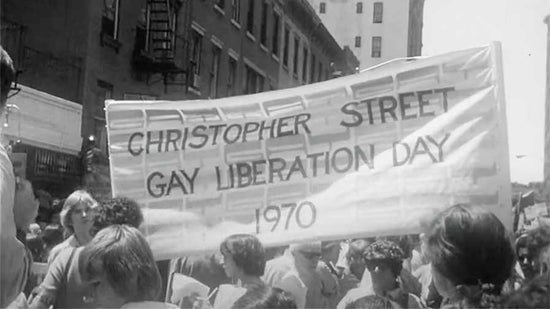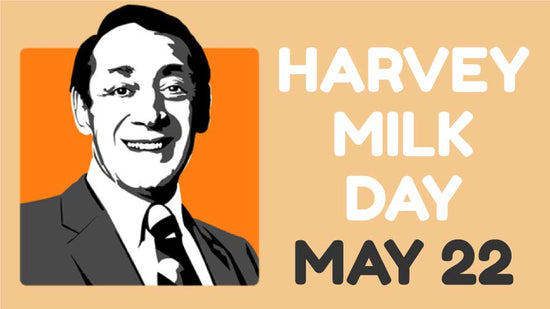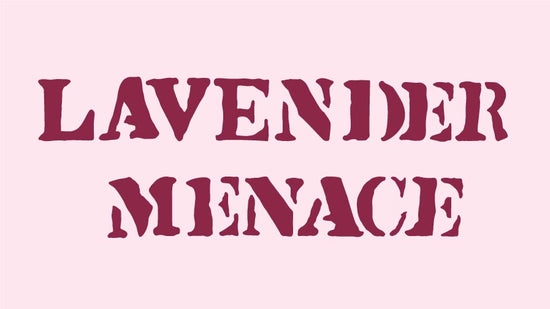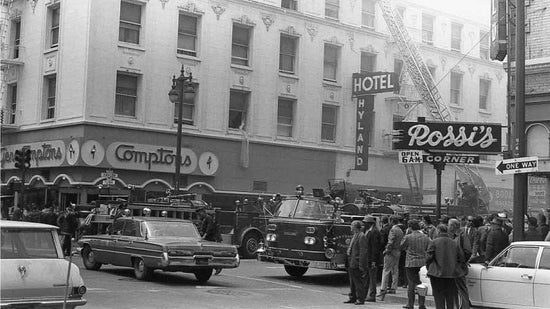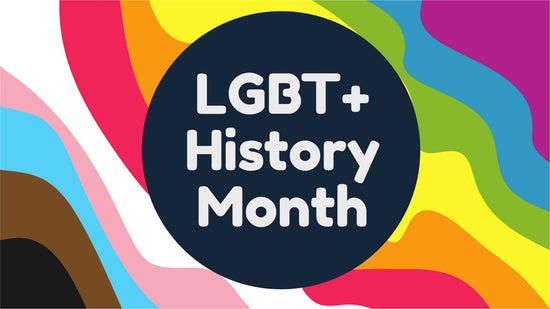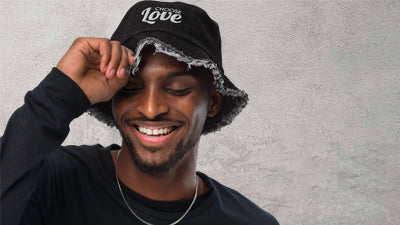Leigh Bowery: Icon, Queer Subversive and Living Art Object

The phrase “there will never be another…” when used to describe someone we’ve lost is almost always misplaced or trite. But there really will never be another Leigh Bowery. Possibly because Leigh’s glorious genius emerged at the perfect moment, as the mid eighties clubbing world was taking off and was at the exact intersection of music, drugs, fashion and art. But also because Leigh was truly a one off human.
The London queer scene had seen nothing like him. He was a living art object, a fashion designer, a still life model, a performance genius, and a club legend. In the vibrant tapestry of queer history, there are few people who shine as brilliantly as he did. His life was a masterpiece of defiance, his body was his canvas, and his colours were bold and defiantly queer.
Leigh’s Suburban Early Life
Born in Melbourne in 1961 in an unremarkable suburb called Sunshine, which he loathed. His father was an accountant and his mother a welfare worker, and although he always kept in contact with his mother, writing regular letters from London, his relationship with his father seems to have been extremely problematic, to the point later in life he angrily warned gay friends about building bridges with parents who had rejected them.
Leigh had shone at school and had already begun to dress in a punk style when he won a place on a fashion course at Melbourne Institute of Technology. But he didn’t stay long, following his boyfriend to London. The place that Leigh thought of as the fashion capital of the world because of punk, street fashion, street art and embodied by Bowie’s Ziggy Stardust.
Leigh Bowery Perfectly Fitted Into 1980s London
Leigh arrived in London in 1980, just as the movement that would be his backdrop was building momentum. This was the era of the club kids, the misfits, the rebels. As the New Romantics started to displace Punk and clubbing was the preserve of the artists and fashion students.
His boyfriend, however, soon decided to return to Australia, so the first months in London were spent alone in an Earls Court flat. But he was out in the clubs, and he soon met and befriended others in the nightlife crowd, the movers and shakers who would eventually become not just his friends but his audience.
At this point he was still fairly low key. While the clothes he created were challenging, confrontational and loud, Leigh himself cut a much more sober figure. But this all changed when he met artist Gary Barnes, aka Trojan.
Trojan was, for a few weeks, Leigh’s lover, and they made a spectacular couple. Leigh saw the attention Trojan was getting in his clothes and decided he wanted some of that. This was the moment that the Leigh Bowery legend was truly born. Soon they were impossible to miss, and Bowery quickly became a shining star in the club scene.
It was at this time that Boy George first met him. "Leigh was a complete original,” he says. “He was someone who didn't give a toss what people thought of him. He was like a walking piece of art, constantly reinventing himself. He was the ultimate expression of individuality. His fashion was his way of expressing his queerness to the world, of saying 'this is who I am, and I'm not afraid to show it.' "

The wonder of Leigh Bowery was the way he was so consistently able to amaze even those close to him. His fearless single-mindedness combined with a playfulness and a determination to constantly outdo himself; to shock more, to amuse more, to be more extraordinary, more absurd to the point of being unacceptable. He deliberately distorted his body, making himself absurd, deformed, otherworldly and often grotesque and it was this that gave him something that’s never been seen before or since.
He was completely comfortable with his body. At 6’3’’ and 17 stone many would try to hide themselves away, but his body was simply his canvas. And he’s on record as saying “Flesh is my most favourite fabric”.
The flat that he and Trojan shared off Commercial Road in East London became a place from which he worked, usually naked, to create the most wondrous worn artworks.
"Leigh was the most outrageous, flamboyant, and fearless person I've ever met," recalls Nicola Bateman, his friend, who he would eventually marry. "He was like a force of nature, unstoppable in his quest to be true to himself."
OUR PRIDE COLLECTION view the full collection
Finding Fame at The Taboo Club
In 1985 Leigh and promoter Tony Gordon started the club that was to become synonymous with the New Romantic culture of the era, and would cement Leigh’s fame and reputation as the most outlandish creature on earth.
Held every Thursday at Maximus just off Leicester Sq in Soho, Bowery's dress code was: "Dress as though your life depends on it, or don’t bother." It was top to toe framed in hedonistic polysexual debauchery. And very soon it became THE place to be, drawing a crowd of radical, decadent, androgynous and subversive freaks.
It was the natural successor to Steve Strange and Rusty Egan’s Blitz Club and Club for Heroes which had recently closed, and Leigh was its Queen. But having his own club gave Leigh licence to behave badly, and he was someone who encouraged bad behaviour. He loved to see the effect his bad behaviour had on people.
Sometimes it was screaming, sometimes sarcasm and bitchiness. Sometimes he said things simply to annoy and outrage people and occasionally he could be very cruel. He also liked to create chaos around him, so having no rules suited him perfectly. "There was a lot of self-destructive behaviour," says George. "It was all about extremes, outdoing each other. One silly thing he loved though was to make up fake guest lists with celebrities on them who would never be going to the club.
“Leigh affected a posh English voice and elongated his vowels, and you never knew if he was being sincere or mocking you.” Boy George told Interview Magazine. “If I ever commented on one of his outfits he would snip, “Oh, thank you, Mr. Boy George. I do value your opinion.” And then he would spin and make some ridiculous noise and mince off.”
Taboo put Leigh front and centre and gave him iconic status. He was featured in magazines and on television and occasional appearances on catwalks. Suddenly he was the extreme face of London’s avant-garde underground scene. But instead of joining the fashion and art world elite Leigh worked even harder to be an outsider. And his work became focussed on the outfits he wore to Taboo, where he could control his appearance on a stage of his choosing.
After only 18 months though Taboo was closed down. Allegations of drug use and solicitation had become too much for the Police and Westminster council. Its status in London nightlife folklore assured by the fact that its incandescent flame had burned for so short a time. People didn’t get a chance to get bored of it. “He realised it was actually a good thing,” Tilly said in a Dazed and Confused interview. “It’s much better when something is shut down at its pinnacle when it’s still really good than when it’s died down and there’s three people from the suburbs in there”.
Uniquely Iconic Performance Art
Even with the extravagant outfits and the shining clubnight that was Taboo it’s perhaps his performances for which Leigh will be remembered most. With one show in particular still talked about with reverence and wonder more than 30 years later.
Legendary monthly club night Kinky Gerlinky had taken up the baton left by Taboo, but its creators Michael and Gerlinde Costiff had made the experience even bigger, more inclusive. At one of their nights in 1990 Leigh was booked to perform.
He appeared on stage dressed in an oversize t-shirt and headscarf he began miming to Divine’s dialogue in John Waters film Female Trouble. Suddenly he began to convulse and his assistant Nicola Bateman, who had hitherto been strapped to him, tore through his tights and fell out, as Leigh gave birth to her alongside loads of blood and an umbilical cord of sausages. I was there that night. It was the most extraordinary thing I’d ever seen. No one who saw that performance, or the subsequent and increasingly revolting versions of what became his signature ‘birthing’ performance will ever forget it.
Nor will the people who saw his AIDS benefit performance, in which he took an enema, bent over and sprayed the front few tables with bodily fluids.
Challenging Conventions of Fashion
Leigh had shows exhibiting his world all over the world, but the main thing you had to understand about his attitude to fashion was that he hated mainstream fashion. Hated the idea of making things for mass appeal. “Fashion is a problem with me,” he told Hugh Laurie in an interview. “You have to appeal to too many people. I like appealing to maybe one or two and I want them to be interested in me but never dare copy me.”
He collaborated with designers such as Rifat Ozbek and made outfits for friends Sue Tilley and Nicola Batemen, and costumes for Boy George and dancer Michael Clark. The clothes he made either exaggerated the current trends or he deliberately did the opposite and parodied them. It was said that he took fashion to places it never wanted to go.
But ironically many of the outfits Bowery created for Tilley are now in the hands of former Louis Vuitton, and now Fendi and DIOR fashion designer Kim Jones, who is a huge fan. “He buys his clothes off me or I swap them for Louis Vuitton bags,” Tilley told Daze and Confused in 2015, “because to be honest, he’ll look after them a hundred times better than me, put it in the vaults at Louis Vuitton, and I’d rather that than having them in a box getting tatty.”

Modelling and Minty
Bowery learned of his HIV status in 1988 and was under no illusions that he may recover. He once told an AIDS worker to stop being positive with people because they were all going to die. But it didn’t stop him from throwing himself into projects almost like he was trying to cram a lifetime’s work into the few years he may have left.
He became an art installation at the Anthony D'Offay Gallery in London. Lying on an antique couch in a box with a one way mirror so he could only see himself, he wore a different outfit each day to encourage people to come back regularly.
And then there was Lucian Freud. The two had met during Bowery’s time at Taboo and Freud had seen the Anthony D'Offay Gallery installation and had become fascinated by him, finding his body, skin tone and his imposing presence extraordinary.
He described Bowery as “perfectly beautiful”. Leigh ended up sitting naked for paintings at Freud’s studio for many months over a period of four years up to his death. It was a relationship that both enjoyed and were inspired by, and they became good friends. Bowery felt a great deal of validation and the resulting works are some of Freud’s most notable.

In 1993, only a year before he died Bowery embarked on his final project, the pop band Minty. A collaboration with friend and fellow designer Richard Torry, Nicola Bateman, and Matthew Glammore. He put a huge amount of effort into getting it right, possibly because he knew how little time he had left. The band played a total of 10 times, with the final one the first night of what was slated to be a two week run at Freedom Bar in Soho but it never made it beyond opening night because the council closed it down immediately.

That performance on the 23rd November 1994 was to be his last. Days later he was admitted to hospital, and having told almost no-one of his AIDS status he did everything possible to keep people from knowing where he was, saying to Tilly “Don’t tell them I’ve died. Tell them I’ve gone to Papua New Guinea.”
He died with Nicola Bateman holding his hand in Middlesex Hospital on New Year's Eve. Lucian Freud paid for his body to be flown to Australia.
A few weeks after his death his friends had a tribute to him in a gallery in Bond St. And many came, still in shock over his death. There were videos of his performances, photographs and mannequins with his many outfits. And on one wall a huge painting of his naked body by Lucien Freud.
Undoubtedly Bowery's greatest masterpiece was himself, his body a canvas for queer expression. Through his performances, he challenged society's norms and expectations, daring to be different in a world that often sought to suppress his queerness.
"Leigh's queerness was his magic, his power, his gift to the world," says Bateman. "And though he may be gone, his spirit lives on in all of us who continue to embrace our own fabulousness, our own queerness, our own magic."
To see Leigh’s amazing creations you can buy Fergus Greer’s amazing book Leigh Bowery’s Looks. Ideally buys from independent bookshops but if you can’t find it there then try Amazon.




